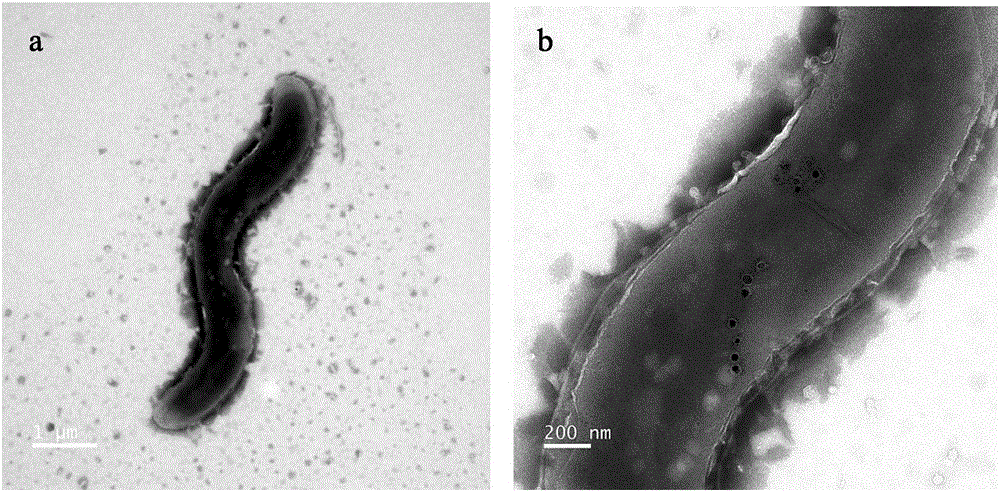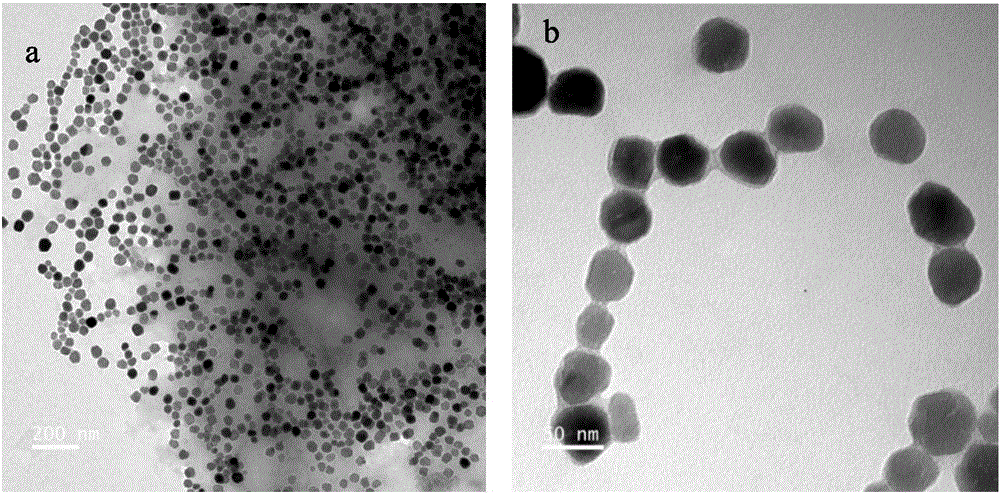Culture method of magnetotactic bacteria AMB-1
A technology of magnetotactic bacteria and culturing method, applied in the direction of bacteria, etc., can solve the problems of harsh culture conditions of AMB-1, the relationship is not clear enough, the number of magnetotactic strains is small, and the effect of improving the density of bacteria and the yield of magnetosomes is achieved.
- Summary
- Abstract
- Description
- Claims
- Application Information
AI Technical Summary
Problems solved by technology
Method used
Image
Examples
Embodiment 1
[0024] Embodiment 1: the activation of AMB-1 thalline
[0025] (1) The original strain AMB-1 (purchased from the American Type Culture Collection (ATCC)) was activated, and the components of the liquid medium (1653 MSGM) used were prepared according to the ATCC official website. The method of activation and cultivation is as follows: quickly take out the original strain from the -80°C freezer, and immediately place it in a 37°C water bath until the strain changes completely from solid to liquid and no ice-like solids are visible. Immediately inoculate the bacteria into a 10ml screw-top test tube filled with sterile liquid medium, tighten it and seal it with a parafilm, place it in a constant temperature incubator at 30°C and cultivate it for 5 days, until the culture medium is cloudy and gray-brown precipitates can be seen at the bottom, The activated bacterial liquid is obtained.
[0026] (2) Centrifuge 10 mL of the activated bacterial liquid obtained in step (1), remove the...
Embodiment 2
[0029] Embodiment 2: comparative test of static culture in incubator and stirring culture in fermenter
[0030] Get the 3rd enlarged culture bacterium liquid that embodiment 1 makes and carry out following experiment:
[0031] Static culture in the incubator: Inoculate the third expanded culture solution into 1L of sterilized ATCC1653MSGM medium (pH6.75) according to the inoculum amount of 5%, the iron source addition amount is 0.02μmol / L, and the temperature is static at 30°C. Place and cultivate for 120h, measure the growth curve and Cmag value at the same time, the results are as follows: figure 1 As shown, after 48 hours of static culture, the OD value of the bacterial cell density was 0.879. The bacteria were collected by centrifugation, ultrasonically crushed to obtain magnetosomes, and weighed after purification. The obtained magnetosomes had a wet weight of 37.1 mg, a dry weight of 0.3 mg, and a yield of 0.3 mg / L.
[0032] Stirring culture in fermenter: according to ...
Embodiment 3
[0033] Embodiment 3: the influence of different iron source additions in fermentor culture AMB-1 thalline
[0034] This example is basically the same as the fermenter stirring culture experiment in Example 2, except that the addition of iron source is divided into three levels: 0.02, 0.2 and 2 μmol / L, and three batches of fermentation culture are carried out. During the cultivation process, samples were taken to measure the OD at the beginning and end and the increment of OD value. The results are shown in Table 1. The wet weights of magnetosomes obtained in the two batches of iron source additions of 0.02 and 0.2 μmol / L were 190.1 and 235.0 mg, the dry weights were 22.7 and 63.3 mg, and the yields were 7.6 and 21.1 mg / L, respectively. The amount of iron source added is 2 μmol / L, and the amount of magnetosomes obtained in batch experiments is extremely low, so it cannot be weighed.
[0035] In order to prove whether AMB-1 synthesizes magnetosomes, observe the arrangement of m...
PUM
| Property | Measurement | Unit |
|---|---|---|
| The average particle size | aaaaa | aaaaa |
Abstract
Description
Claims
Application Information
 Login to View More
Login to View More - R&D
- Intellectual Property
- Life Sciences
- Materials
- Tech Scout
- Unparalleled Data Quality
- Higher Quality Content
- 60% Fewer Hallucinations
Browse by: Latest US Patents, China's latest patents, Technical Efficacy Thesaurus, Application Domain, Technology Topic, Popular Technical Reports.
© 2025 PatSnap. All rights reserved.Legal|Privacy policy|Modern Slavery Act Transparency Statement|Sitemap|About US| Contact US: help@patsnap.com



